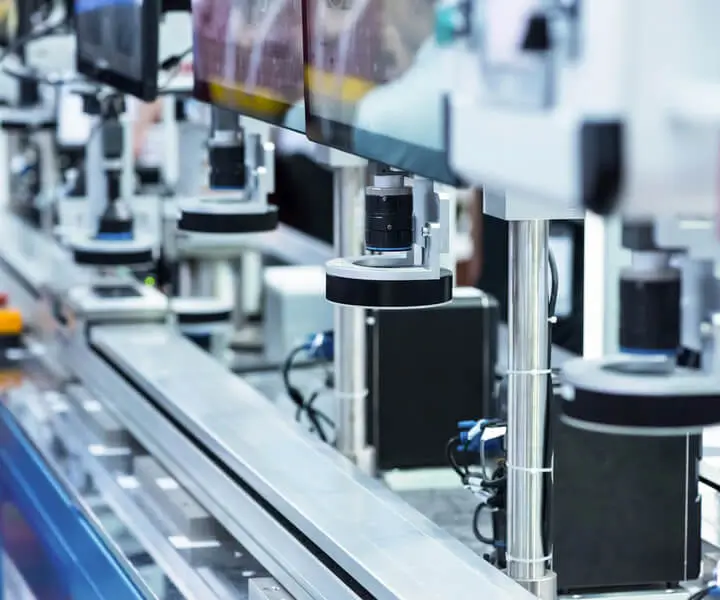part 1:
Unleashing Precision and Power: The Future of Motion Control with Brushless DC Motor Servo Drives
In the rapidly advancing world of automation and robotics, the demand for precise, reliable, and efficient motor control is higher than ever. Among the pivotal technologies driving this evolution are brushless DC (BLDC) motor servo drives—a sophisticated fusion of electrical engineering, control theory, and modern materials. These drives are transforming how industries approach automation, from manufacturing to aerospace, turning complex, high-performance tasks into streamlined operations with remarkable accuracy.

The Rise of Brushless DC Motors: A Brief Overview
Traditional brushed DC motors were once the gold standard in motor technology, appreciated for their simplicity and cost-effectiveness. However, their mechanical brushes and commutators posed significant drawbacks—wear and tear, maintenance issues, and limited lifespan. These limitations spurred the development of brushless DC motors, which substitute electronic commutation for physical brushes, offering a cleaner, more durable alternative.
A BLDC motor replaces brushes with electronic controllers that precisely switch the current in each phase windings. This setup not only extends the motor's operational life but also improves efficiency and reduces electromagnetic interference. The absence of brushes means less mechanical noise and maintenance, making BLDCs ideal for environments demanding high reliability and low downtime.
Why Choose a Brushless DC Motor Servo Drive?
While a BLDC motor provides excellent performance characteristics, harnessing its full potential requires sophisticated control. That’s where brushless DC motor servo drives come into play. These servo drives are specialized electronic systems designed to precisely regulate the operation of BLDC motors, handling aspects such as speed, torque, position, and acceleration with unerring accuracy.
Key advantages include:
High Efficiency: With fewer power losses, BLDCs coupled with advanced servo drives deliver superior energy performance—crucial for large-scale manufacturing and energy-sensitive applications. Precise Control: Through sophisticated algorithms, servo drives enable fine positioning and speed regulation, making them perfect for applications requiring micron-level accuracy. Dynamic Response: These drives can rapidly adjust motor output in response to feedback, supporting complex motion profiles and smooth operation even under demanding loads. Low Maintenance: Electronic commutation reduces wear and tear, coupled with diagnostic features that simplify fault detection and preventive maintenance.
Inside the Heart of a BlDC Servo Drive
A typical BLDC servo drive comprises several interconnected components:
Power Stage: Converts incoming electrical power into appropriate waveforms for motor operation, often employing high-speed digital switches such as IGBTs or MOSFETs. Controller: The brain of the system, utilizing microcontrollers or DSPs (Digital Signal Processors) to execute control algorithms, handle feedback data, and generate appropriate pulse-width modulation (PWM) signals. Feedback System: Often an encoder or resolver provides real-time data on rotor position, enabling the controller to perform field-oriented control (FOC) or other advanced algorithms. Communication Interface: Supports integration with supervisory systems or higher-level automation frameworks via Ethernet, CAN bus, or other protocols.
The Control Algorithms: The Secret Sauce
At the core of a BLDC servo drive's performance are its control algorithms. Advances like field-oriented control (FOC) allow for smooth, precise torque production by continuously aligning the stator magnetic field with the rotor magnetic field. This approach results in near-silent operation, minimal power loss, and excellent dynamic response.
Fuzzy logic, PID (Proportional-Integral-Derivative) controllers, and adaptive algorithms further enhance performance by dynamically adjusting to changing load conditions and environmental factors. The result is a system capable of executing complex motion trajectories with ease, whether in industrial robots, CNC machines, or aerospace actuators.
Application Spectrum: From the Factory Floor to Outer Space
Brushless DC motor servo drives are not confined to any single industry—they have found a home wherever precision, efficiency, and dependability are paramount. Typical applications include:
Manufacturing Automation: Precise positioning of robotic arms, conveyor systems, and automated assembly lines. CNC Machinery: Achieving the micron-level accuracy necessary for complex machining and tooling tasks. Aerospace & Defense: Actuators and control surfaces requiring high reliability and exact motion control. Medical Equipment: From MRI machines to surgical robots, where delicate yet accurate movements are crucial.
The Environmental Advantage
With global emphasis on sustainability, BLDC drives also stand out for their lower energy consumption and reduced electromagnetic emissions. Their higher operational efficiencies mean less waste heat, enabling slimmer designs and longer service lifespans—aligning with the eco-conscious goals of modern industries.
Leveraging innovations in modular drive technology, Kpower integrates high-performance motors, precision reducers, and multi-protocol control systems to provide efficient and customized smart drive system solutions.




































